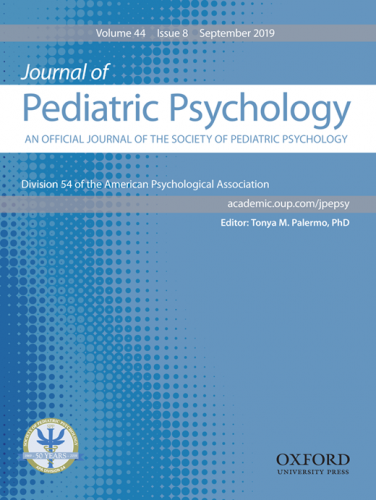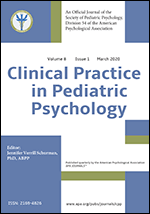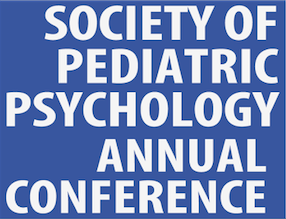Fact Sheet: Transitioning to adult care
Background and Significance
Over 90% of children with special health care needs are surviving to adulthood and must transition from a pediatric to an adult model of care in order to receive optimal health care. Health care transition (HCT) is defined as the dynamic, active process of attending to the medical, psychosocial, and educational/vocational needs of AYA as they move from pediatric to adult care. Approximately 500,000 AYA with special health care needs transition annually, but only 41% are successfully establishing care within an adult medical home.
Psychosocial Implications
Poor HCT planning and preparation, for all patients, can result in disruptions in health care, lower quality care, and adverse health consequences, including an increased risk of mortality for some AYA with special health care needs. Barriers to improving transition support include limited training and availability of adult providers with whom to arrange a smooth transition, the lack of tools for assessing patient and family readiness to transition, anxiety from patients, their families, and pediatric providers, and insurance/financial issues.
Evidence-based Assessment
It is important to assess several aspects of the AYA’s life in order to transition successfully. Specifically, the vast majority of transition readiness measures assess AYA’s knowledge and self-management skills. Other factors that are often assessed include the AYA’s readiness to transition, concern about transitioning, level of parental involvement, and self-advocacy skills.
Evidence-based Interventions
Few studies have been conducted which explicitly examine interventions to promote transition from pediatric to adult care. While some interventions have targeted the health care system, others have targeted transition readiness of patients and their families. Interventions targeting AYA’s have included promotion of self-management skills, providing psychoeducation, and use of technology for education and to provide treatment reminders. Other factors that have been targeted include use of a transition coordinator and having a specialized transition clinic.
Culture, Diversity, Demographic, and Developmental Factors Impacting Transition to Adult Care
AYA with special health care needs experience developmentally-normative transitions in puberty, sexuality, autonomy, personal identity, education, and vocational choice during adolescence, in addition to HCT, all of which can be affected by physical and/or mental disabilities, pain, medical setbacks, forced dependence, and perceived prognosis. Socio-demographic factors associated with an increased risk of poor HCT outcomes include non-Hispanic black or Hispanic race/ethnicity, lower income, non-English speaking, and the lack of a medical home.
Resources
- Gottransition.org
- https://www.thenationalalliance.org/
- https://hschealth.org/
- https://www.aacap.org/AACAP/Families_and_Youth/Resource_Centers/Moving_Into_Adulthood_Resource_Center/Moving_Into_Adulthood_Resource_Center.aspx
- https://medicalhomeinfo.aap.org/tools-resources/Documents/Shared%20Plan%20of%20Care2.pdf
Authors: Siddika Mulchan, Psy.D., Lila Pereira, Ph.D., & Jeannette Iskander, M.A.
Date of Last Update: February 22, 2019
References
- American Academy of Pediatrics, American Academy of Family Physicians, & American College of Physicians-American Society of Internal Medicine. (2002). A consensus statement on health care transitions for young adults with special health care needs. Pediatrics, 110(Supplement 3), 1304-1306.
- Bloom, S. R., Kuhlthau, K., Van Cleave, J., Knapp, A. A., Newacheck, P., & Perrin, J. M. (2012). Health care transition for youth with special health care needs. Journal of Adolescent Health, 51(3), 213-219.
- Blum, R. W., Garell, D., Hodgman, C. H., Jorissen, T. W., Okinow, N. A., Orr, D. P., & Slap, G. B. (1993). Transition from child-centered to adult health-care systems for adolescents with chronic conditions: a position paper of the Society for Adolescent Medicine. Journal of Adolescent Health, 14(7), 570-576.
- Cooley, W. C., & Sagerman, P. J. (2011). Supporting the health care transition from adolescence to adulthood in the medical home. Pediatrics, 128(1), 182-200.
- Crowley, R., Wolfe, I., Lock, K., & McKee, M. (2011). Improving the transition between paediatric and adult healthcare: a systematic review. Archives of disease in childhood, 96(6), 548-553.
- Devine, K. A., Monaghan, M., & Schwartz, L. A. (2017). Transition in pediatric psychology: Adolescents and young adults. Handbook of Pediatric Psychology (5th ed., pp. 620–631). New York, NY: Guilford Publications, Inc.
- Lotstein, D. S., Ghandour, R., Cash, A., McGuire, E., Strickland, B., & Newacheck, P. (2009). Planning for health care transitions: results from the 2005–2006 national survey of children with special health care needs. Pediatrics, 123(1), e145-e152.
- McPheeters, M., Davis, A. M., Taylor, J. L., Brown, R. F., Potter, S. A., & Epstein, J. R. (2014). Transition care for children with special health needs. Rockville, MD: Agency for Healthcare Research and Quality.
- Reiss, J., & Gibson, R. (2002). Health care transition: destinations unknown. Pediatrics, 110(Supplement 3), 1307-1314.
- Schwartz, L. A., Daniel, L. C., Brumley, L. D., Barakat, L. P., Wesley, K. M., & Tuchman, L. K. (2014). Measures of readiness to transition to adult health care for youth with chronic physical health conditions: a systematic review and recommendations for measurement testing and development. Journal of Pediatric Psychology, 39(6), 588-601.



